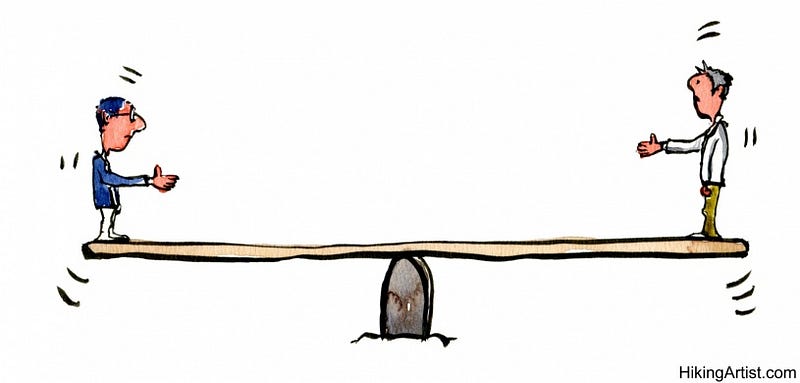Procurement is a complex business function, nuanced from organization to organization, and unconsciously tied to many facets of a company’s corporate structure.
Revenue, cost, and production are direct results from procurement actions.
Without the sourcing and purchasing of goods, materials and/or services, there wouldn’t be a business. These are the actions — undervalued as they may be — that insert the key in the ignition and start the engine of a well-oiled business, internally and externally.
As all business functions, procurement possesses segmentations that must work together, while remaining completely stand-alone: such as Indirect Procurement and Direct Procurement.
These two subsidiaries of the overall procurement function have been split apart in definition and assignment, and for obvious reason. Indirect and Direct Procurement function with complete autonomy from each other, and have little to do with each other, besides the root of the functions: sourcing and purchasing.
But, could there exist one without the other? Could a business value Direct Procurement without even practicing Indirect?
Hopefully, this post can offer a means to start answering these very pertinent questions.
I know. The suspense is killing me too. So… let’s begin!
What Are the Differences Between Indirect & Direct Procurement?
Indirect Procurement
Indirect procurement is the sourcing and purchasing of materials, goods, or services necessary for internal use.
Some basic examples could be the purchasing of:
- Travel
- Technology (computers, phones and other hardware)
- Utilities (gas, electric, water etc.)
- Facility management (beverages, toiletries etc.).
But, also, indirect spend could be allotted to the procurement of:
- Development management (trainings, HR, recruitment etc.)
- External Professional Services (consultancy, speakers, advisers)
- Software (as well as hardware)
- Marketing Spend (ad space, PR, agencies) (Abouelsaad 2017).
Indirect procurement has — long — been defined as administrative spend, necessary for the daily financial control and internal functionality of a company’s facilities and employee base. However, the elements listed above both prove, and disprove, that notion.
“Some procurement executives believe that “spend is spend” regardless of whether it consists of direct materials or indirect spend. In reality, the indirect procurement of services is a different universe compared to the direct side. The organizational culture and landscape on the indirect side has many nuances that do not exist on the direct side. The procurement executive will therefore need to traverse the waters of indirect spend with unique strategies to ensure success” (Lutzer 2013).
So, if spend isn’t just spend, what makes direct and indirect procurement so different?
Direct Procurement
Direct procurement is the acquisition of goods, materials, and/or services to be directly applied to an organization’s own production of materials, goods or services.
Some examples of direct procurement could be raw materials, machinery and/or products for resale.
Manufacturing is a vertical that has direct spend rooted, deeply, into its overall procurement strategy. Without direct procurement of machinery and raw materials, manufacturers are effectively stagnant shells of businesses.
While both, direct and indirect procurement are circular business processes, necessary to the functionality of an organization, direct procurement is seen as a means of creating profit margins and competitive advantage.
Often, direct procurement is accredited with the management of product quality, operational performance, and consumer experience; considering its close ties to the manufacturing process. For this reason, one could argue that a revenue stream wouldn’t exist without the presence of direct procurement.
But, does it’s direct impact on revenue stream, production and top-line value make direct procurement more important than indirect?
You Be the Judge
Now, it’s time for us to put on our critical thinking hats.
Procurement, as stated, is a nuanced business function. The impacts of direct and indirect procurement are — of course — situational, and this post has been written from a rather Meta perspective. But still, it raises a debate-worthy question.
Which is more important?
On one hand…
Direct procurement drives external profits, and is responsible for revenue, costs, quality and performance.
On the other hand…
Indirect procurement holds responsibility for day-to-day functionality of an organization.
The complex nature of indirect spend makes it an extremely interesting function, and much more business-critical than its definition may lead on. One could argue, in fact, that indirect procurement is more essential to the success of an organization than direct, even though it has no direct impact on customer-driven profits.
Without the proper management of facilities, ability to travel for business, software to optimize line functions, electricity, heat, water, consultancy in problem areas, and/or advertising of brand/products there wouldn’t be a business; there’d be an assembly line left.
Direct procurement may be responsible for quality and performance, but without an operational structure — provided by indirect procurement activities — the acts of direct procurement create a nucleus with no protective membrane.
Whilst we’re at it, we might as well turn this argument on its head!
Direct procurement essentially creates the capital allotted to the indirect spend. Without a continuous growth in revenue, the management of facilities or internal-focused procurement is utterly redundant.
Without a product, there is no market — and consequently — no need for indirect procurement.
Meeting in the Middle

As far as I can see, a proper balance of indirect and direct procurement are necessary in order to build a profitable business today. Whether one is more important than the other, doesn’t really hold any true weight as far as I’m concerned.
Without each other, neither exists.
If you have thoughts or comments, please feel free to leave them below. The Kodiak Rating team would love to hear from you.
Until next week.












